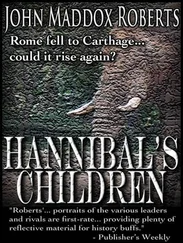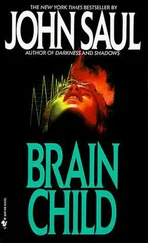According to the dual systems model (Steinberg 2010) and the related maturational imbalance model (Casey 2015), adolescent risk-taking can be understood in terms of two distinct dimensions – incentive processing and cognitive control – that mature on separate time scales and are underpinned by distinct neurobiological circuitry.
From puberty onwards, the subject becomes more sensitive to rewards, novelty and sensation seeking, due to changes in the functioning of the dopaminergic system, a “socioemotional” system that involves limbic structures, the amygdala, the nucleus accumbens and other areas of the brain associated with judgments about the attractiveness of stimuli.
This stimulus-processing system develops rapidly in early to mid-adolescence; adolescents show greater reactivity in the ventral striatum in response to rewards than do children or adults and the extent of ventral striatum reactivity correlates with real-world risk-taking.
This system is activated by a strong secretion of testosterone during puberty, which is, of course, much higher in boys than in girls. So this “reward system” is activated earlier now, from the beginning of puberty.
In late adolescence, self-regulation is enhanced by a second system, the “cognitive control decision system”, located in the prefrontal areas (responsible for executive functions such as memory, attention, planning, inhibition and flexibility). This system regulates decisions about reward and peer pressure. Unfortunately, this control system does not mature until the age of 22, 23 or even 24.
For example, white matter volume increases until the mid-20s, particularly in brain areas involved in high-level cognitive control. Thus, this neural maturity gap is thought to result in increased sensitivity in adolescents to rewards and emotions without a concomitant increase in their ability to control their behavior.
The problem of adolescence is thus a problem of the agenda between these two systems, the first developing more rapidly than the second and producing that strong increase in the search for sensations and rewards that the adolescent can find in risk-taking, this being the means of satisfying this need. With the secular changes in the age of puberty, this also allows us to understand why risky behaviors and their potentially dangerous consequences are occurring earlier today.
Thus, the issue is not that adolescents are more impulsive than adults or that they seek more rewards than adults; the issue is that they do not sufficiently understand the associations between behavior and consequences (and the balance between benefits and costs: “If I have one more drink, I will be more euphoric but I might also get my license revoked”). This has been shown using functional brain imaging: the synaptic chains connecting the limbic to the prefrontal regions are not “finite” (“myelinated”, to use the technical term), so there is not enough synchronization between cognition and affect.
Brain imaging has also shown the influence of this coordination on resistance to peer pressure, a highly significant factor in risk-taking in young people. Adolescents who are more sensitive to peer pressure are those who activate the areas most involved in the perception of others’ actions, whereas subjects who are less sensitive to peer pressure are those with better connectivity between these areas and those of cognitive control in decision-making.
The transition from adolescence to adulthood thus seems to be a period of “tuning”, thanks to a better connectivity between the prefrontal and the limbic, which allows a better cognitive control of emotions. For as long as this adjustment is not made, adolescence will be a period of vulnerability, because the two cortical systems are in conflict during decision-making and risk-taking, and when one system predominates over the other – for example, the socioemotional system – immediate rewards will be too prevalent.
To conclude on this neurobiological agenda, it leads to the idea that risk-taking is a question of tempo, or, more precisely, of two different tempi, between the rapid socioemotional system of reward and the much slower system of cognitive control. Adolescents will (fortunately) not take risks all the time, but there will be times when emotions and peer pressure will activate the emotional system to such an extent that it will overwhelm the adaptive capacity of cognitive control.
This helps to explain why early puberty and early initiation of substance use behaviors are predictive risk factors, which occur at a time in life when the prefrontal and executive functions are not yet controlling the reward system.
However, adolescent behavior also depends on the social and relational context. To take just one example, English adolescents are killed half as much on roads as their French counterparts, with the same number of individuals and cars. While biology is the same, it is culture that explains the differences.
Furthermore, the discovery of the dual agenda by neurobiology may lead actors to two conflicting conclusions:
– some may argue that the lack of maturation of prefrontal control means that nothing can be done and that adolescents must be protected in spite of themselves, by measures to reduce exposure to risk;
– others will argue, on the other hand, that adolescence is a time of maximum plasticity for learning and experience and that intervention is needed. Furthermore, testosterone also increases social status sensitivity at puberty, not just reward sensitivity; this could allow for status to be played out in peer intervention and prevention.
1.7.2. Questioning the existence of adolescence
The concepts used to categorize individuals between the ages of 10 and 30 (such as “pre-adolescent”, “post-adolescent”, “adolescent”, “Tanguy 4”, “early adolescence” and “late adolescence”) have little scientific validity; this led René Zazzo to his provocative formulas: “childhood and adolescence do not exist”.
Indeed, a dual variability is highly characteristic of the second decade of life and casts considerable doubts over the validity of categorizations:
– a strong “interindividual” variability: subjects at the same age are very different from one another (girls are two years more advanced than boys in terms of maturation and, within the same sex, boys with very early puberty or very late puberty can be very different);
– a strong “intraindividual” variability: at this period of life, the individual can change rapidly and strongly.
On the other hand, one phenomenon will affect all young people in France the extension and precariousness of youth, as shown by the statistical data in Table 1.1.
Table 1.1. Average age at end of education in France
| Year |
1930 |
1970 |
1990 |
| Age |
15.8 |
20.3 |
21.5 |
This extension, which is desirable, is sometimes even decided politically, when a minister declares that 80% of an age group must obtain their baccalaureate. The price to be paid is the prolongation of dependence on parents. Thus, 72% of 18–24 year-olds live with their parents (EU average).
Another consequence is the delay of parenthood (see Table 1.2).
Another negative consequence is that many people enter the world of work in a precarious way; previously, it was done in a way of integration, but today, it is more a question of experimentation (the archetype of the trainee).
Table 1.2. Average age of mothers at first child in France
As a result, unemployment is twice as high among young people (23% compared with 10% for the general population) and 20% of young French people live below the poverty line, a reality that the country does not dare to face.
Читать дальше












